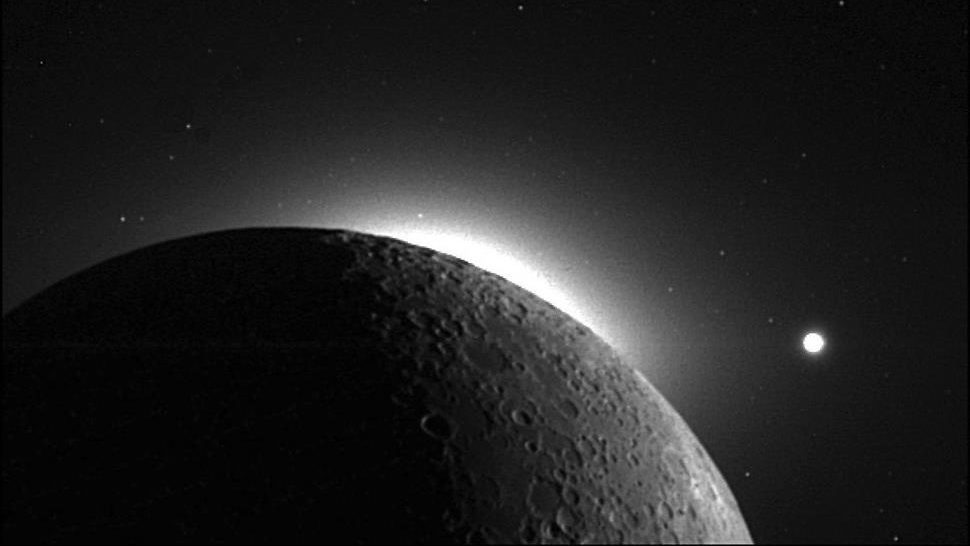The “Big Crunch”: New dark energy data raises questions about Universe’s fate

- Recent measurements from the Dark Energy Spectroscopic Instrument (DESI) suggest that dark energy, the force driving the Universe’s accelerating expansion, may not be constant and could vary over time, challenging previous assumptions about the fate of the Universe.
- For nearly a century, the scientific consensus has been that the Universe is expanding, a process thought to be influenced by dark energy. Recent data indicates this expansion is not only continuing but could be influenced by changes in dark energy’s intensity.
- DESI’s ongoing research and analysis require careful interpretation to confirm if dark energy is dynamic, potentially reshaping our cosmic understanding.
Every culture has a story of the eschaton: the end of time. In Norse mythology, the world will end in an epic battle called Ragnarök, with gods fighting the Ice Giants. In Christian lore, the book of Revelations says the final battle will happen at Armageddon. Even modern science has its own tale, one in which the repulsive gravity of an ephemeral energy field called dark energy will push the galaxies of the Universe apart until they are no longer visible from the Milky Way. While this model is largely accepted in the scientific community, recent media reports have claimed that scientists are rethinking their predictions.
However, these stories are premature. It is true that a collaboration of astronomers called the Dark Energy Spectroscopic Instrument (DESI) recently released a very precise measurement of both dark energy and how it has evolved over time. But caution is needed to understand the recent publication’s true import.
The expanding Universe
For nearly a century, astronomers have known that the cosmos is expanding. For decades, it was thought that the gravitational influence of the galaxies of the Universe was slowing the expansion. But that all changed in 1998, when two groups of astronomers determined that the expansion of the Universe was not slowing down — it was speeding up. Over the following quarter-century, many measurements confirmed this observation and astronomers settled on an explanation.
This explanation was that the Universe is filled with an energy field with a constant energy density. This energy field is called dark energy and the version of dark energy that is constant is called the cosmological constant. Before the recent DESI announcement, all prior measurements were consistent with the cosmological constant. However, the constancy of dark energy is not certain; some dark energy models predict that it will change over time. These changing forms of dark matter are called quintessence.
If dark energy were to become smaller, it is possible that the slowing effect of ordinary gravity could again take over, potentially leading to a scenario often called the “Big Crunch,” where the Universe collapses on itself. In contrast, if dark energy were to become larger, it’s possible that the repulsive effect of dark energy could eventually tear apart individual galaxies, solar systems, and, in extreme cases, even atoms. If dark energy were to become much larger, the far future of the Universe could be individual subatomic particles, separated by cosmic distances. The future Universe could look very different than our current one.
To determine whether dark energy is indeed constant, what astronomers need to do is to measure the rate of expansion of the Universe over time. The DESI experiment uses the 4-meter Mayall Telescope, located on Kitt Peak in Arizona, to image distant galaxies and determine their velocity with respect to Earth. Because of the finite speed of light, these observations can image galaxies from 11 billion years ago to the present day. By measuring the velocity of galaxies at different distances from the Earth, they can determine how those velocities changed over time.
DESI is scheduled to observe for five years. It began operations in 2019. After years of careful data analysis, the DESI collaboration has released the results from their first year of observation. In a series of papers, they claim to have:
- Made the largest and most accurate map of the structure of the Universe over the last 11 billion years.
- Have measured the expansion history from the period of 8 to 11 billion years ago with a precision of under 1%.
- Surpassed the precision of all previous measurements combined.
The press release and publications by the DESI experiment claim that their data is consistent with the prevailing theory of dark energy, which says that dark energy is constant. However, when the DESI data is combined with other (earlier) data and the ensemble is compared to a variety of theories, a model in which dark energy changes over time fits the data better. Under this scenario, dark energy has been slowly getting smaller.
Reconciling constant and dynamic dark energy models
So, which is right? Here is where things get tricky. The correct answer is “both,” and the explanation arises from statistics. In discovery science, a prediction and a measurement rarely are exactly the same. After all, measurements have inherent uncertainties arising from imperfections in the experimental equipment and many predictions include approximations that make the prediction imprecise. For example, suppose a prediction of some quantity is 1 and the measurement is 2 ± 0.9. In the simplest interpretation, the measurement is somewhere between 1.1 and 2.9, which differs from the prediction.
However, the difference between the prediction and the range of possible values for the measurement is quite small and it would be hasty to say that the two disagree. On the other hand, if the prediction were the same and the measurement was 6 ± 0.9, the range of possible measurements (5.1 to 6.9) is sufficiently large that it becomes reasonable to definitively claim that the measurement and prediction are different.
In the case of the recent DESI measurement, the prediction and measurement (which uses a single year of DESI observation) are quite close, but there is a small difference between the two. This difference favors the scenario of changing dark energy.
So, what’s next? The DESI experiment already has several years of data recorded and will eventually release the result of an analysis using three years of observation, which will be followed by a release of five years of observation. If the small difference between prediction and theory is a real effect, future analysis will confirm it.
Suppose it turns out that future precise measurement of DESI data confirms that dark energy is changing over time. In that case, this will be a very significant observation — one that will revolutionize our understanding of cosmology. However, at the current time, future data analysis could still confirm the idea of constant dark energy. Unfortunately, it will be at least a year before we have a better understanding of this situation.





